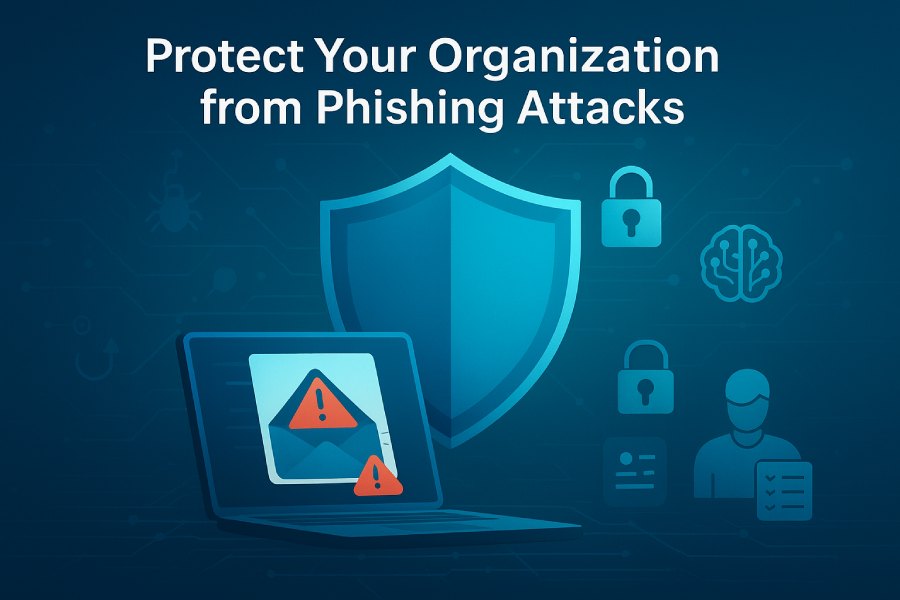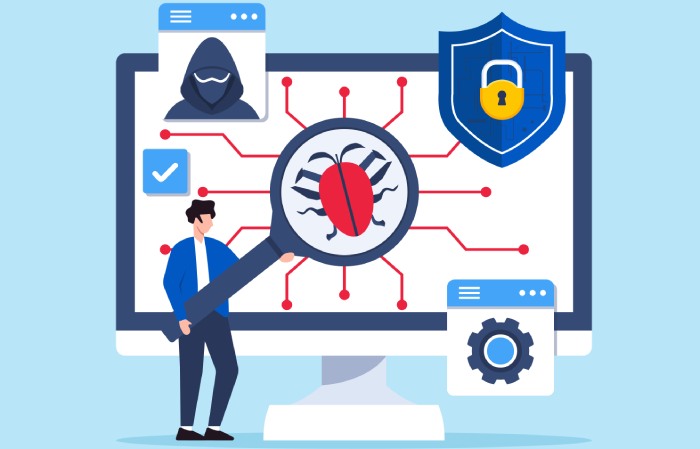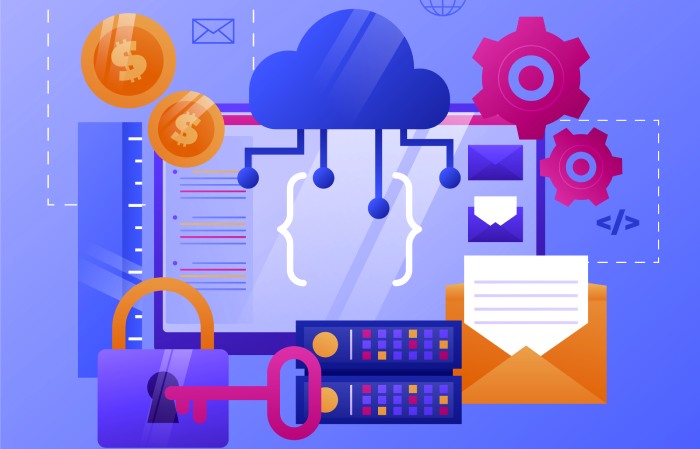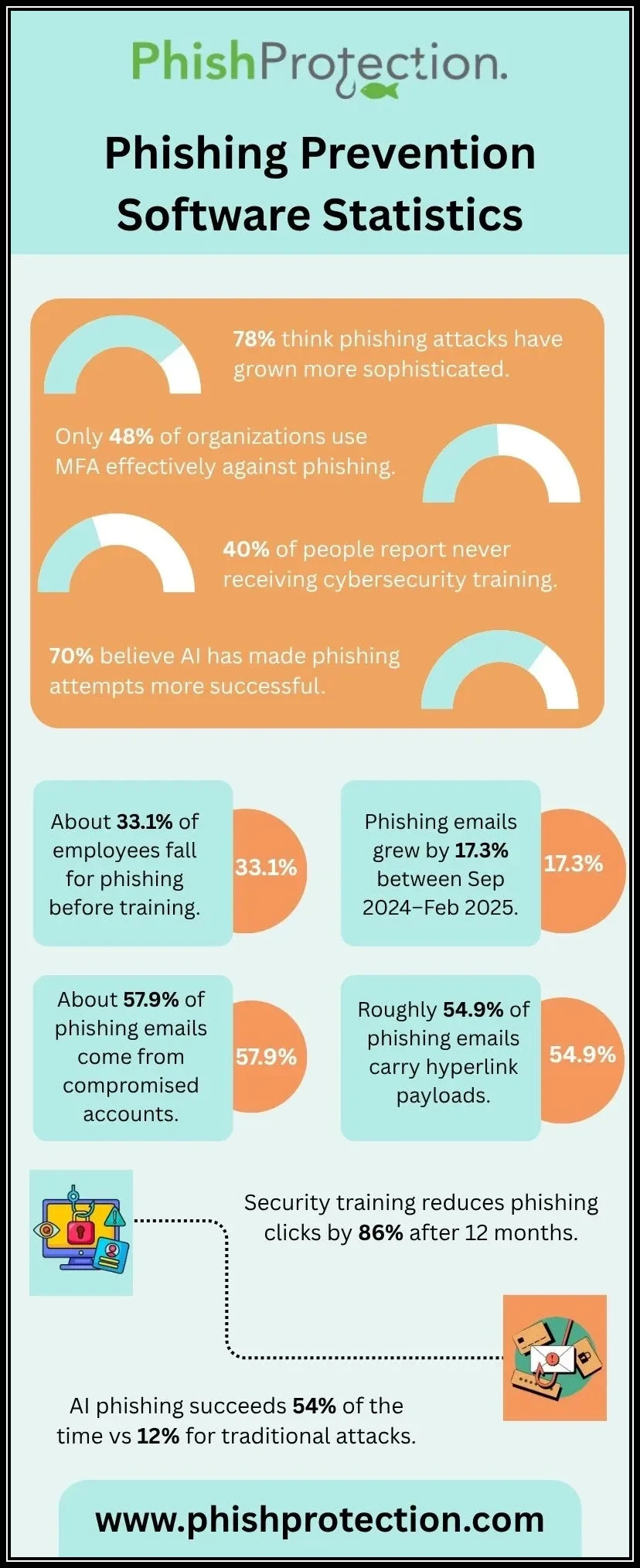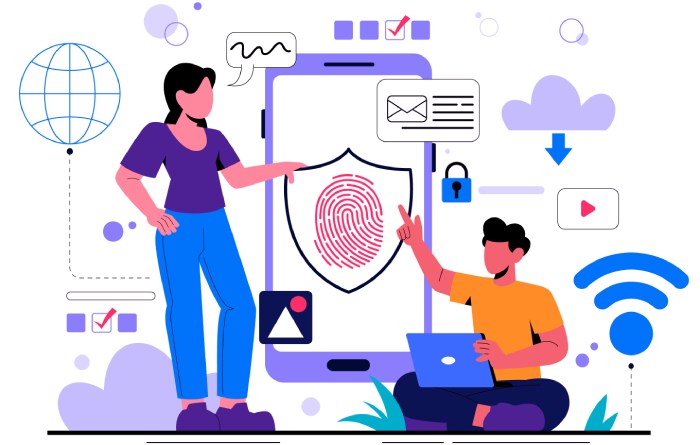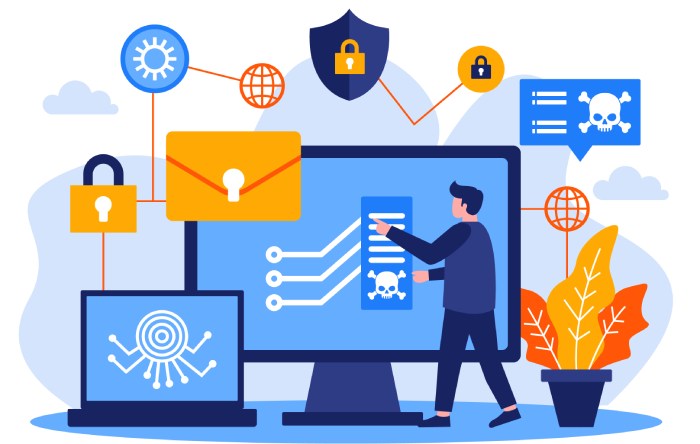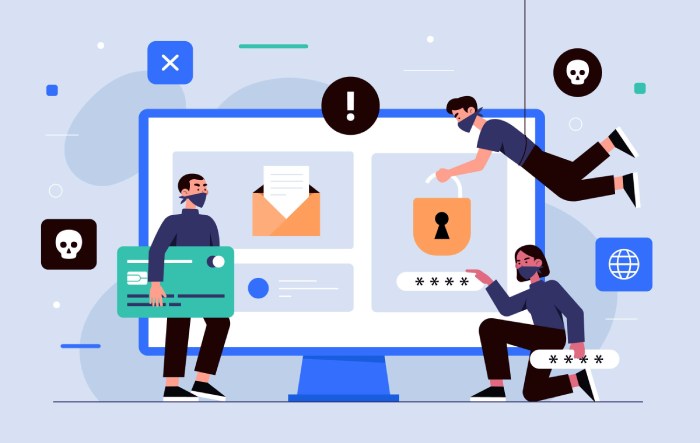Phishing represents one of the most pervasive and damaging cyber attack vectors today, targeting individuals and organizations alike to steal sensitive data, compromise digital identities, and facilitate fraud. These attacks manifest primarily as deceptive emails, fraudulent websites, or even text messages designed to lure victims into divulging credentials, clicking malicious links, or downloading malware. Spear phishing, a highly targeted form of phishing, leverages social engineering defense weaknesses by customizing messages to specific employees or executives, making detection more difficult.
The impact of phishing attacks extends beyond immediate data breaches and credential theft. They frequently act as entry points for zero-day attacks, ransomware deployment, and subsequent network compromise. Organizations face financial losses due to fraud, reputation damage, regulatory fines, and operational disruption. Effective phishing detection, combined with comprehensive email security and endpoint security measures, is critical to protect against these threats.
Importance of Anti-Phishing Services in Cybersecurity
Given the evolving sophistication of phishing attacks, implementing robust anti-phishing software and cybersecurity services is no longer optional but essential. These services provide multi-layered defense mechanisms, including phishing URL detection, domain spoofing protection, and behavioral analytics to identify anomalous activities indicating phishing attempts. Security service providers offer real-time threat monitoring through advanced security operations centers (SOCs), enabling rapid cyber attack mitigation and effective incident response.
Moreover, anti-phishing services extend beyond technical solutions; they also provide security awareness training and phishing simulation platforms to arm employees against social engineering tactics. Coupled with multi-factor authentication (MFA), these defense layers contribute significantly to cybercrime prevention and data breach prevention efforts. Integrating these security controls with existing network security providers and cloud security services further strengthens an organization’s cyber risk management posture.
Key Features to Look for in an Anti-Phishing Service Provider
Selecting the right anti-phishing service provider hinges on an array of critical features that address the multifaceted nature of phishing threats:
- Phishing Detection and Email Security: The provider should offer advanced email filtering and secure email gateways that incorporate machine learning in cybersecurity to detect and quarantine phishing emails before reaching end users. Solutions like Microsoft Defender for Office 365, Cisco Secure Email, and Mimecast are leaders in this space.
- Threat Intelligence and Cyber Threat Analysis: Access to real-time and updated threat intelligence, including phishing blacklist providers and domain spoofing data, enables proactive defense. Industry leaders such as Proofpoint and FireEye integrate extensive threat feeds and cyber threat analysis into their platforms.
- Credential Theft Prevention and Malware Protection: Essential capabilities include endpoint security features and anti-spam solutions that help prevent the exploitation of stolen credentials and protect against embedded malware within phishing emails.
- Phishing Simulation and Security Awareness Training: A robust user training platform, as offered by KnowBe4 and Cofense, helps organizations understand their vulnerability through simulated attacks and conduct tailored training to reduce human risk factors.
- Phishing Response Solutions and Incident Response Teams: Effective remediation requires providers equipped with phishing site takedown services and incident response teams capable of rapid intervention to minimize damage.
- Multi-Factor Authentication and Digital Identity Protection: Integration of two-factor authentication or MFA mechanisms enhances security by adding layers of identity verification, essential in thwarting phishing attacks focused on credential compromise.
- Behavioral Analytics and Security Information and Event Management (SIEM): Providers integrating SIEM solutions and behavioral analytics can detect sophisticated phishing attempts by analyzing user behavior and network traffic anomalies.
- Cyber Attack Mitigation and Zero-Day Attack Protection: To safeguard against emergent threats, the provider must facilitate zero-day attack protection and cyber attack mitigation strategies as part of an overall cybersecurity services portfolio.
- DNS Security and Web Security: Enhanced firewall capabilities, DNS security, and web security services are necessary to block access to phishing URLs and prevent users from visiting malicious sites.
Comparing Different Anti-Phishing Technologies and Approaches
There is a wide spectrum of anti-phishing technologies spanning signature-based detection, heuristic analysis, and increasingly, machine learning models that analyze vast datasets to identify subtle indicators of phishing attacks. Secure email gateways such as Barracuda Networks and Symantec (Broadcom) utilize AI-driven phishing URL detection and email filtering to deliver effective email security solutions. Meanwhile, providers like Darktrace employ behavioral analytics and autonomous response to recognize and contain phishing spread within networks dynamically.
Anti-fraud services offered by vendors like RSA Security and Trend Micro emphasize fraud prevention by integrating digital identity protection and transaction monitoring, closing the loop between phishing detection and financial impact minimization. Additionally, cloud security services and mobile security solutions address phishing attack vectors beyond traditional email, safeguarding modern hybrid environments.
Some providers focus on domain spoofing protection and phishing blacklist updates linked to Google Safe Browsing to reduce the success rates of deceptive URLs. Others, such as PhishLabs, specialize in comprehensive phishing response solutions, including phishing site takedown services, which remove malicious infrastructure to prevent further victimization.
Evaluating Vendor Reputation and Track Record
Choosing the right anti-phishing provider requires careful evaluation of reputation, industry certifications, and customer testimonials to ensure reliability in cybersecurity services. Vendors like McAfee, Sophos, Forcepoint, and Avast have a well-established presence in the market with proven efficacy in anti-spam solutions and malware protection.
Enterprise organizations often prefer providers with global security operations centers capable of offering 24/7 real-time threat monitoring and incident response. IBM Security and FireEye excel in delivering integrated cybersecurity ecosystems encompassing threat intelligence, cyber threat analysis, and SIEM integration.
Collaborations between vendors and active contributions to cybercrime prevention communities signal a commitment to evolving phishing defense strategies. Providers that offer customizable security awareness training modules and incorporate phishing simulation into their platforms tend to be more effective in reducing phishing risk among employees.
Finally, the ability to provide detailed reporting and support for multi-factor authentication enhancement underscores a vendor’s dedication to comprehensive phishing defense and holistic cyber risk management frameworks.
Integration Capabilities with Existing Security Infrastructure
Modern anti-phishing solutions are designed to seamlessly integrate with existing security infrastructure, enabling organizations to leverage their current investments in cybersecurity services. For example, secure email gateways such as Cisco Secure Email and Microsoft Defender for Office 365 work in tandem with endpoint security solutions and network security providers to enhance phishing detection and cyber attack mitigation.
Integration with Security Information and Event Management (SIEM) systems—offered by providers like IBM Security and RSA Security—allows incident response teams and security operations centers to conduct in-depth cyber threat analysis, enabling real-time threat monitoring and faster response to phishing URL detection and phishing attack vectors. Advanced anti-phishing software also employs machine learning in cybersecurity to analyze behavioral analytics, providing adaptive defenses against social engineering attacks and spear phishing prevention.
Domain spoofing protection features integrate with DNS security services and phishing blacklist providers such as Google Safe Browsing, ensuring that organizations benefit from layered protection across web security, mobile security, and cloud security services. This interoperability facilitates holistic cyber risk management, making anti-fraud services and cybercrime prevention more effective against evolving threats, including zero-day attack protection and credential theft prevention.
Cost Considerations and ROI Analysis
When evaluating anti-spam solutions and anti-phishing software, cost considerations extend beyond initial licensing fees to include operational expenses and long-term return on investment (ROI). Investment in comprehensive cybersecurity services—featuring phishing detection, email security, and phishing response solutions—yields measurable benefits in fraud prevention and data breach prevention.
Providers such as Proofpoint, Barracuda Networks, and Trend Micro offer scalable pricing tailored to organizational size, which covers core functionalities like phishing simulation, phishing site takedown services, and security awareness training. Organizations must weigh costs against reduced incident fallout, such as lowered remediation expenses handled by incident response teams, decreased downtime, and prevention of costly data breaches.
Additionally, user training platforms like KnowBe4 enhance security awareness training, helping to reduce risky user behavior and consequently lowering the likelihood of successful phishing attacks. Achieving effective cyber attack mitigation through multi-factor authentication and behavioral analytics contributes to a favorable ROI by strengthening defenses without disproportionate expenditure.
User Training and Awareness Features Offered by Providers
User awareness remains a cornerstone of effective phishing protection strategies. Leading security service providers such as PhishLabs, Cofense, and Mimecast emphasize security awareness training that incorporates phishing simulation and social engineering defense to educate employees on identifying phishing attack vectors.
These training modules often integrate with email filtering and secure email gateways to deliver real-world context for threats, including phishing URL detection and domain spoofing. User training platforms deploy gamified learning experiences and continuous testing to enhance retention, while analytics help track individual and organizational susceptibility to threats like spear phishing and credential theft.
Multi-factor authentication and two-factor authentication campaigns complement these training efforts by providing users with practical tools to safeguard digital identity protection. Furthermore, providers like Sophos and FireEye incorporate feedback loops from threat intelligence feeds to keep training content relevant against emerging phishing trends, thereby strengthening organizations’ overall cyber risk management posture.
Case Studies: Success Stories of Effective Anti-Phishing Solutions
Numerous organizations have recorded significant success by deploying integrated anti-phishing solutions. For instance, a multinational financial institution leveraged Proofpoint’s threat intelligence and phishing blacklist providers alongside real-time threat monitoring to reduce phishing incidents by over 80% within their network. Partnering with incident response teams utilizing behavioral analytics and phishing site takedown services allowed rapid remediation of threats, further cementing their cybersecurity posture.
Similarly, a healthcare provider implemented Mimecast’s secure email gateways combined with KnowBe4 security awareness training to address spear phishing prevention and malware protection. The synergy of email filtering and phishing simulation led to a marked decline in credential theft attempts, safeguarded patient data, and improved compliance with data breach prevention regulations.
Another example includes a technology company adopting Cisco Secure Email integrated with Trend Micro’s cloud security services and DNS security to counter domain spoofing attacks and phishing URL detection effectively. Their security operations center, powered by IBM Security’s SIEM, leveraged machine learning in cybersecurity to identify and mitigate zero-day attacks and phishing attack vectors rapidly.
Future Trends in Anti-Phishing and How to Stay Prepared
The landscape of anti-phishing continues to evolve, driven by advances in machine learning in cybersecurity and the increasing sophistication of cyber threats. Future trends point toward greater automation in phishing detection and response, with security service providers enhancing phishing response solutions and leveraging artificial intelligence to bolster fraud prevention and data breach prevention.
Integration with next-gen endpoint security and cloud security services will become more streamlined, facilitating comprehensive protection across mobile security and web platforms. Behavioral analytics will play a pivotal role in cyber threat analysis while expanding the scope of digital identity protection through innovations in multi-factor authentication and zero-trust architectures.
Emerging technologies such as phishing site takedown services, DNS security enhancements, and improved phishing blacklist provider networks—similar to Google Safe Browsing capabilities—will empower organizations to stay ahead of phishing attack vectors. Continuous security awareness training supported by user training platforms, along with investments in robust incident response teams and security operations centers, will be necessary to sustain cybercrime prevention efforts amid evolving threat landscapes.
Key Takeaways
- Effective anti-phishing strategies require integration with existing security infrastructures, combining email security, endpoint security, and threat intelligence for holistic protection.
- Investing in comprehensive cybersecurity services, including phishing simulation and security awareness training, delivers measurable ROI through enhanced fraud prevention and data breach prevention.
- Continuous user education coupled with behavioral analytics and multi-factor authentication is critical to preventing phishing attacks and credential theft.
- Case studies from leading providers like Proofpoint, Mimecast, and Cisco Secure Email demonstrate the effectiveness of layered anti-phishing solutions.
- Future trends emphasize automation, machine learning, and expanded phishing response capabilities to stay ahead of evolving phishing attack vectors and cybercrime threats.

